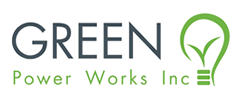Editors' Note: Finding a contractor that is knowledgeable about materials, practices and products that will help to make your home more eco-friendly is often a challenge. This article features two contractors that have made promoting green building practices part of their business purpose.
- Keith Wright is a contractor specializing in remodeling vintage homes who has brought together a Chicagoland Green Building Team.

- Mark Rzucildo is a full service contractor with Green Power Works in Chicago.
If you have worked with a contractor that you would like to recommend, please let us know and we will add the information to Green Community Connections. Please click on the link below for the full article by Cassandra West, and check out the resources on each of these contractors' websites for lots more information on green building options.
by Cassandra West
The Chicagoland Green Building Team
Keith Wright, a contractor specializing in remodeling vintage homes, is determined to make suburban living a little greener—one step at a time. The Chicagoland Green Building Team is an association of contractors, designers and consultants brought together by his firm, Wright Services Corp., to promote green building practices in the construction/remodeling industry.
Together, the team can provide homeowners a comprehensive selection of green building products and practices or, as Wright puts it, “options that fit their budgets.” Wright works with clients to determine their needs, then they tailor solutions to fit their wallets.
For owners of older vintage homes who want to their abodes to be greener, it’s typically the simple things that make the most sense, Wright says. Heating and cooling that is high efficiency is a good start. “People want to do the right thing and be environmentally friendly, but it always comes down to their budgets.”
Some of the more high-end improvements such as geothermal may be out of a lot of people’s reach in this climate, Wright says. “People will really want to make a statement to do geothermal in this climate because of the cost associated with it. But there’s tremendous improvements in heating and cooling, and you can get something that’s very efficient.”
Green is the Future and There's No Turning Back
Wright, 49, has seen lots of innovations during his years in the building trades. Sustainable material solutions like bamboo or cork flooring, and low-VOC (volatile organic compounds) paints that don’t have as many toxic substances are drawing the attention of more homeowners, he says. And, continuing innovations will help bring down the cost, making green construction more attraction to more homeowners.
“If you look at innovations in solar going back 10 years and how far that’s come, it’s unbelievable,” he says. “As you move forward more, the costs will be reduced. When you reach a level that’s more affordable for your average homeowner, that’s when you’ll start seeing a lot more of these things.”
For now, though, homeowners can take one step at a time. Green is the future and there’s no turning back, Wright believes. “The reason that I’ve educated myself along these lines is to keep pace with where this industry is going. Eventually this is the way the building industry will go. I don’t think there’s any alternative.”
Mark Rzucildo of Green Power Works, Inc.
On the Northwest side of Chicago, Mark Rzucildo, of Green Power Works Inc., a full-service general contractor, helps his clients live greener inside their homes. His company installs solar and wind turbine systems and LED lighting. While most of his business is commercial, he’s hoping more residential customers will come around to green power solutions.
Switching to LED lights is a simple solution, Rzucildo says. LED lights use less than half the amount of energy as standard lighting, he points out. The amount of energy cost saving for solar depends on how much energy a household uses and how many people live in the home. Solar panels are installed mostly on the roof and can be made to operate on or off the electrical grid.
Wind turbines can be installed several winds. In Chicago, wind turbines can be installed 15 feet above the roof line. Different suburbs have different regulations, says Rzucildo, who is looking into what the regulations are for the western suburbs. Oak Park currently has no specific regulations governing wind turbines.
Rzucildo wants to see more government support for green power. When that happens, he expects more consumers will come around to it, too.


